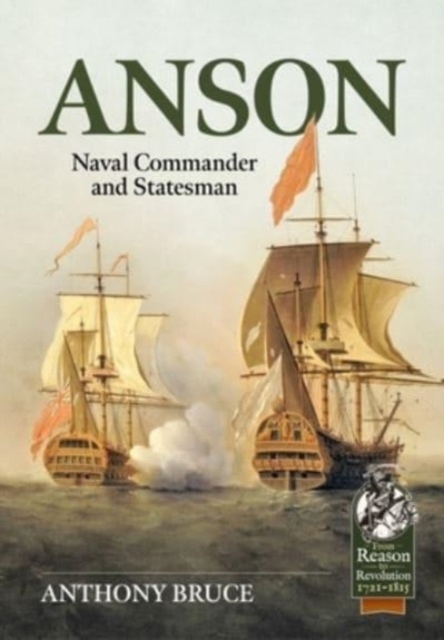Anson: Naval Commander and Statesman

Anson: Naval Commander and Statesman
In 1737 he was appointed captain of the 60-gun Centurion and sent on patrol to West Africa and the Caribbean. It was in this ship that he circumnavigated the globe (1740-1744) during the war with Spain. Ordered to attack the Pacific coast of Spanish South America, the expedition almost ended in disaster when half of Anson's squadron disappeared as it encountered 'huge deep, hollow seas' during the passage around Cape Horn. Despite further heavy losses, Anson was able to carry out a limited number of raids against coastal targets, but his capture of the Spanish treasure galleon Nuestra Señora de Covadonga off the Philippines was a real victory that secured his reputation (and wealth).
On his return Anson, welcomed as a national hero, soon revealed his political ambitions: he joined the opposition Whigs, was elected MP for Hedon and appointed to the Admiralty Board. Although he entered the Board while still a captain, he secured rapid promotion to Rear-Admiral, Vice-Admiral and then Admiral of the Fleet. Anson returned to sea in command of the Western Squadron in 1746-1747 and his notable victory against the French at the Battle of Cape Finisterre was a rare example of a British naval success after seven years of war. Anson, who was then raised to the peerage, returned to the Admiralty Board, working with the Duke of Bedford as First Lord and with Lord Sandwich on a series of naval reforms, which included ending political interference in courts-martial, introducing compulsory retirement, innovations in ship design and the formation of the Royal Marines under Admiralty control.
In 1751, Anson succeeded Lord Sandwich as First Lord of the Admiralty and served until his death in 1762 (except for one brief interruption in 1756-1757 following the loss of Minorca). The reform program continued, but his main priority on returning to office (and the Cabinet) in the Pitt-Newcastle coalition was<
PRP: 215.64 Lei
Acesta este Prețul Recomandat de Producător. Prețul de vânzare al produsului este afișat mai jos.
194.08Lei
194.08Lei
215.64 LeiLivrare in 2-4 saptamani
Descrierea produsului
In 1737 he was appointed captain of the 60-gun Centurion and sent on patrol to West Africa and the Caribbean. It was in this ship that he circumnavigated the globe (1740-1744) during the war with Spain. Ordered to attack the Pacific coast of Spanish South America, the expedition almost ended in disaster when half of Anson's squadron disappeared as it encountered 'huge deep, hollow seas' during the passage around Cape Horn. Despite further heavy losses, Anson was able to carry out a limited number of raids against coastal targets, but his capture of the Spanish treasure galleon Nuestra Señora de Covadonga off the Philippines was a real victory that secured his reputation (and wealth).
On his return Anson, welcomed as a national hero, soon revealed his political ambitions: he joined the opposition Whigs, was elected MP for Hedon and appointed to the Admiralty Board. Although he entered the Board while still a captain, he secured rapid promotion to Rear-Admiral, Vice-Admiral and then Admiral of the Fleet. Anson returned to sea in command of the Western Squadron in 1746-1747 and his notable victory against the French at the Battle of Cape Finisterre was a rare example of a British naval success after seven years of war. Anson, who was then raised to the peerage, returned to the Admiralty Board, working with the Duke of Bedford as First Lord and with Lord Sandwich on a series of naval reforms, which included ending political interference in courts-martial, introducing compulsory retirement, innovations in ship design and the formation of the Royal Marines under Admiralty control.
In 1751, Anson succeeded Lord Sandwich as First Lord of the Admiralty and served until his death in 1762 (except for one brief interruption in 1756-1757 following the loss of Minorca). The reform program continued, but his main priority on returning to office (and the Cabinet) in the Pitt-Newcastle coalition was<
Detaliile produsului









